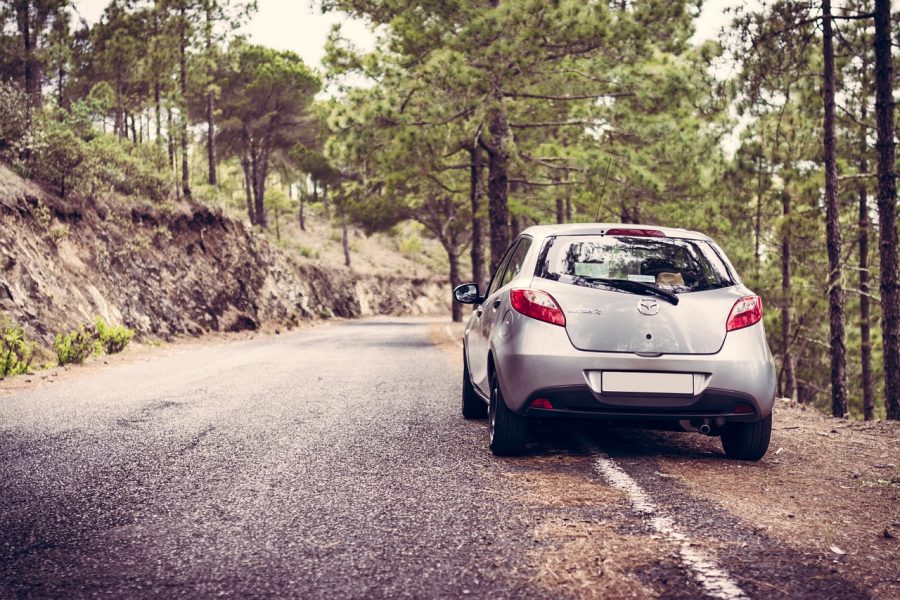Don’t Let Anything Surprise You – Ultimate Checklist For Long Car Trips

You can plan your dream trip to the very last detail, but you also need to think about the companion you depend on the most – your car. We all know how car breakdown in our local neighbourhood can be frustrating, but if it happens to you on an open road it could turn into a real nightmare.
If you want to make sure that your vacation remains a fun and relaxing experience, you need to go through some basic car maintenance tasks before you hit the road. That’s why we’ve prepared the ultimate checklist that will make sure your long car trip will be a pleasure for you and your loved ones, not a misery.
Have you tried to cover hundreds of miles without an appropriate amount of water? Well, your car can also succumb to the thirst, and its menu of fluids contains much more variety.
Car engine consists of elements such as the crankshaft, camshaft, and pistons that require lubrication in order to move smoothly without friction. And for that, your car needs oil that should be changed every 3 to 5 thousand miles. But you can’t always fully relly on the covered range, so it is recommendable to check the fill level and oil condition using the dipstick. If it’s below the minimum or gritty and black, you need to replace it.
Every car engine produces a lot of heat, and the radiator is there to keep it cool. And what radiator needs to perform this task is the fluid popularly called the antifreeze, which extracts the heat from the engine and dissipates it through it. The result of the low level of this fluid is overheating, so make sure you flush the system on 50 thousand mile intervals.
Most drivers don’t know that brake pedals also have their fluid which forces the brake pedals to clamp on the rotors, slowing your car. Every time you hit the brake this fluid needs to compress inside the brake lines, so if the pedals feel spongy or if it goes lower than usual than the fluid is probably contaminated due to an irregular flushing.
Every driver knows how jerking during transmission shifts can be irritating. The cause of these uncomfortable shifts lies in the transmission fluid which is supposed to help the gears mesh smoothly. This fluid lasts a long time so there are certain cars that are sold with a ‛lifetime’ guarantee, but the truth is that this fluid can also go bad. So it is recommendable to replace it after 60 thousand miles, while after 100 miles this replacement becomes rather mandatory.
Everybody knows what windshield fluid is, but many drivers don’t pay much attention to it. If your car is clean at the beginning of the trip that doesn’t mean it will stay that way, and you need to be able to see where you’re going.
The state of your leg muscles determines the mileage you can walk and the amount of effort that walk will cost you. It’s the same when it comes to your car – its tyres are the foundation stone of an effective trip, meaning safe, comfortable, and fuel-efficient one.
When you go on a vacation trip you don’t want to stop at every gas station and you want your ride to be a comfortable one. Well, if the air pressure of your tyres is incorrect you’ll be in for it. Underinflated tyres will definitely produce the waste of gas, while the overinflated ones will be less compliant and make a ride quality much worse. Air pressure can also cause an uneven wear of tires that would need to be replaced sooner. So you need to perform a check every thousand miles.
Proper air pressure is not the end of the story. Different road conditions, along with weight balance and variations in suspension calibration, could make your tyres wear out unevenly. The best way to avoid this is to swap your tyres between the left and right side or rear and front to make them exposed to similar variations. It is recommendable to perform this rotation every 5 to 8 thousand miles.
If you’re not certain about the expiration date of your tyres you can always perform a simple penny test. Your tyres could last anywhere from 25 to 50 thousand miles, but if you spot sidewall bulges or damage punctures, you should replace them immediately. But be careful with the replacement and make sure you perform a tyre compare before the purchase.
You’re done with all the important stuff, and it remains only to check the details that are a part of a general maintenance. You probably didn’t know about the fluid inside brake pads, but you do know that they can wear away and the squealing or screeching noise is there to warn you. If you don’t want bugs, debris, and dust entering your car (or engine) you need to make sure that your air filters are not clogged. You can have a clean windshield, but at night you’re not going anywhere without working headlights. Don’t forget to check taillights and turn signals, too. And always look under the hood before you hit the road – all the fluids mentioned above will be useless if your hoses are leaking.
As we’ve already said, your car is also your travel companion, although a mechanical one. It needs to have its bodily fluids on the level and its ‛legs’ need to be in top shape. The rest is just like a routine medical check-up.
